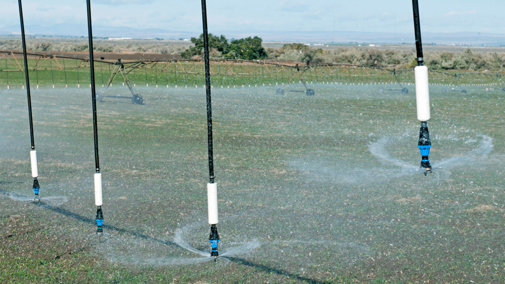Fall Grazing of Alfalfa
Every fall, there can be some situations where there can be the potential to graze alfalfa. In some cases, the alfalfa may not have been big enough to warrant haying or maybe you have an alfalfa field that is adjacent to some cornstalks. A side benefit is that grazing alfalfa in late fall or winter can reduce alfalfa weevil infestations by removing stems and plant parts that serve as a wintering site or a spring laying site for weevil eggs.
Even through late October and into November, alfalfa is still quite green, despite several nights with low temperatures in the 20s. There may be some wilting and yellowing, especially on the top, but most leaves still are attached to the plant stems.
The real question often being asked is, “Can I be sure my cows won’t bloat if they graze my alfalfa?”. To be quite honest, you can never be 100% certain that alfalfa won’t cause bloat. Bloat occurs in ruminant livestock when gas produced during fermentation becomes trapped inside the rumen.
Bloat risk is much lower a week after a hard freeze that causes wilting. But always use good management methods to reduce the risk further. Have cows full before turning out to alfalfa. Wait until mid-day, after frost or dew is gone, before turning out. Provide other dry, palatable feeds or even bloat retardants. And keep a close eye on them for the first couple days.
Alfalfa can be grazed safely. Just be careful and realistic.
Fall Alfalfa Irrigation
A dry end to summer and start of fall is great for producers needing to get crops harvested. However, these conditions don’t do our alfalfa fields any favors as they prepare for winter. Can fall irrigation help with stand stress?
For irrigated alfalfa, targeted fall irrigation may help the long-term strength of the stand. While not every stand will benefit equally, for those with deep- to medium-textured soils and dealing with dry conditions, a fall irrigation may put plants in a good position heading into winter. Good growing conditions prior to winter dormancy helps alfalfa stands build reserves in the root system, resulting in better regrowth next spring.
Fall irrigation can also help refill soil profiles that were depleted during the summer. Evaporation and transpiration in the fall are lower than during summer heat, so less of the water supplied will be lost and more can move deeper into dry soils. In many alfalfa fields, the water supplied during the growing season may never reach beyond four feet, while the roots go down eight feet. This is especially true for fine-textured soils where infiltration may be limited. By padding the profile now, extra water will help plants better deal with stress during high heat and high water demands next summer.
Finally, with a full soil moisture profile headed into winter, soil temperature is better regulated, helping keep plants alive during the winter. Dry soils in the winter will push the frost line deeper and may have greater frost heaving, damaging alfalfa roots and crowns. While snow cover in the winter is key for regulating soil temperatures and maintaining moisture, having moisture in the profile right away means we start off ahead, not behind.
Watering dry alfalfa fields in the fall will help recharge water in the soil profile, combat winter stress and start plants growing strong during the spring of a dry year.

